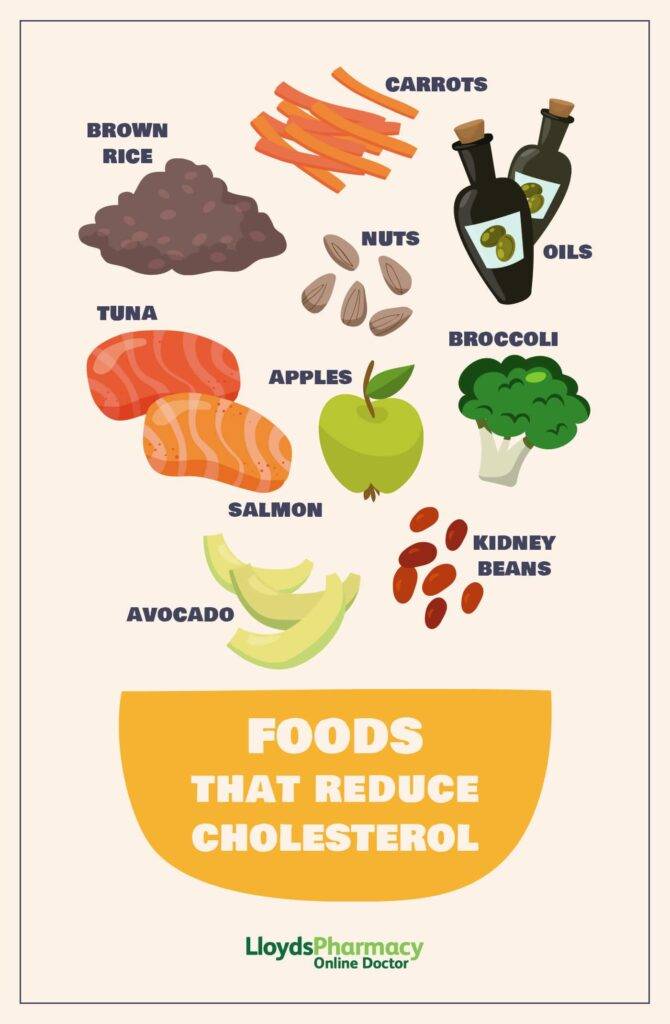In a world increasingly focused on wellness and holistic health, the quest to manage cholesterol levels has become a pivotal aspect of many people’s journeys toward better living. With heart disease ranking among the leading health concerns, understanding the intricacies of cholesterol—frequently enough dubbed the “silent killer”—is more crucial than ever. But rather than turning to medication alone, many are discovering the power of nature and lifestyle changes in combating high cholesterol. This article delves into the natural strategies that can help lower cholesterol levels, from dietary changes and exercise routines to stress management techniques and the adoption of beneficial herbs and supplements. Join us as we explore these effective,enduring methods to enhance your heart health and reclaim your well-being,one habit at a time.
Table of Contents
- Understanding Cholesterol and Its Impact on Health
- The Benefits of a Heart-Healthy Diet
- Powerful Foods to Lower Cholesterol levels
- The Role of Fiber in Cholesterol Management
- Incorporating Healthy Fats into Your Meals
- The Importance of Regular Physical Activity
- Stress Management Techniques for Heart Health
- Natural Supplements to Consider for Cholesterol Control
- Building a sustainable Lifestyle for Long-Term Benefits
- monitoring Your Progress and Staying Motivated
- Q&A
- To Conclude
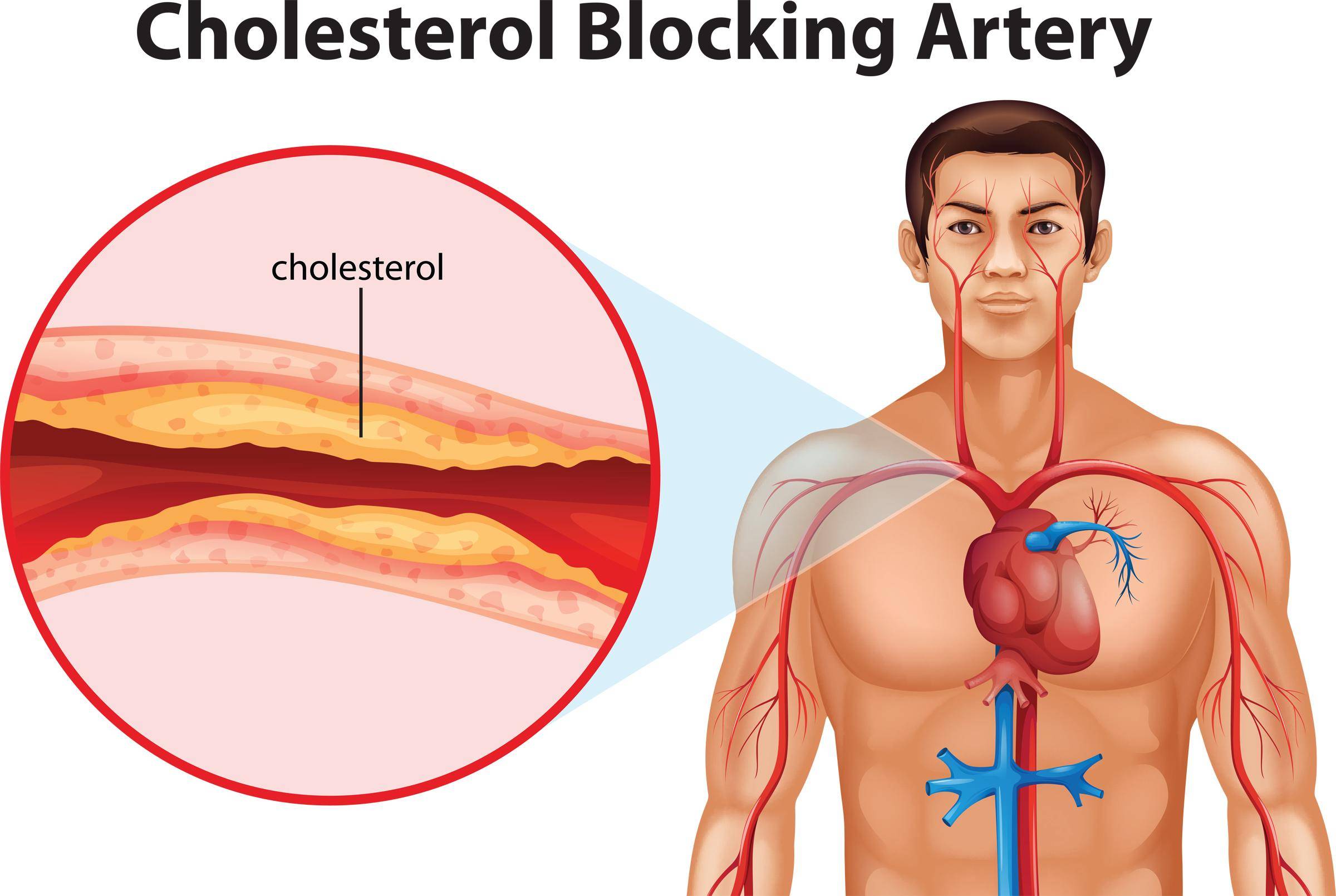
Understanding Cholesterol and its Impact on Health
Cholesterol, a waxy substance found in every cell of the body, plays a crucial role in the formation of cell membranes, hormones, and vitamin D.However,not all cholesterol is created equal. There are two primary types: Low-Density Lipoprotein (LDL), often termed “bad” cholesterol, and High-Density Lipoprotein (HDL), known as “good” cholesterol. The balance between these two types is essential, as elevated levels of LDL can lead to plaque buildup in arteries, increasing the risk of heart disease and stroke.
Understanding your cholesterol levels is vital for maintaining optimal health. Regular check-ups and blood tests can provide insights into your lipid profile. Typically, a total cholesterol level below 200 mg/dL is considered desirable. Here’s a concise breakdown of cholesterol levels:
| Cholesterol Level | Category |
|---|---|
| Below 200 mg/dL | Desirable |
| 200-239 mg/dL | Borderline High |
| 240 mg/dL and above | High |
To naturally reduce cholesterol levels, incorporating specific lifestyle changes can make a important impact.Consider the following strategies:
- Increase Soluble Fiber: Foods like oats, beans, lentils, and fruits can help lower LDL cholesterol.
- Healthy Fats: Replace saturated fats found in butter and red meat with healthier options such as olive oil, avocados, and nuts.
- Regular Exercise: Aim for at least 150 minutes of moderate aerobic activity each week to boost HDL levels.
- Avoid Tobacco Smoke: Quitting smoking can improve your HDL cholesterol and overall heart health.
- Manage Stress: Techniques such as meditation, yoga, and deep-breathing exercises can aid in maintaining healthy cholesterol levels.
Incorporating these practices not only supports cholesterol management but also enhances overall well-being. Remember, gradual changes can lead to lasting results. Monitoring your progress and staying informed about your health can empower you in your journey toward managing cholesterol levels effectively.
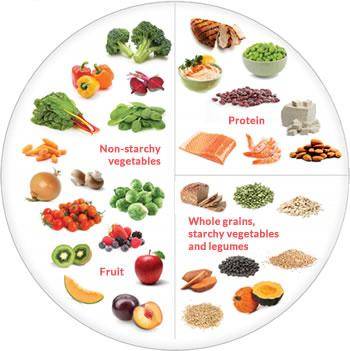
The Benefits of a Heart-Healthy Diet
Adopting a diet that promotes heart health can have profound effects on your overall well-being. By focusing on nutrient-dense foods, individuals can significantly reduce the risk of heart-related issues.This approach not only helps in lowering cholesterol but also enhances cardiovascular function.Making informed dietary choices allows for a balance of essential nutrients that support heart health.
Incorporating a variety of fruits and vegetables into your meals is one of the simplest yet most effective ways to improve heart health. These foods are naturally low in calories and high in essential vitamins, minerals, and fiber. Consider including:
- Leafy greens: Spinach, kale, and collard greens
- Berries: Strawberries, blueberries, and raspberries
- Citrus fruits: Oranges, grapefruit, and lemons
Whole grains are another cornerstone of a heart-healthy diet. Unlike refined grains, whole grains retain their bran and germ, providing more fiber and vital nutrients. Opting for whole grains over their refined counterparts can aid in reducing cholesterol. Examples include:
- Brown rice
- Quinoa
- Oats
Healthy fats also play a critical role in promoting cardiovascular health. Replacing saturated fats found in animal products with healthier options can contribute to lower cholesterol levels. Incorporate sources of unsaturated fats, such as:
- Avocados: Packed with heart-healthy monounsaturated fats
- Nuts and seeds: Almonds, walnuts, and flaxseeds
- Olive oil: an excellent choice for cooking and dressings
understanding the impact of added sugars and sodium in your diet is vital. reducing intake of these components can promote heart health and assist in controlling cholesterol levels. Consider measuring your daily intake with the following simple table:
| Food Type | Recommended Daily Limit |
|---|---|
| Added Sugars | Less than 10% of total calories |
| Sodium | Less than 2,300 mg |
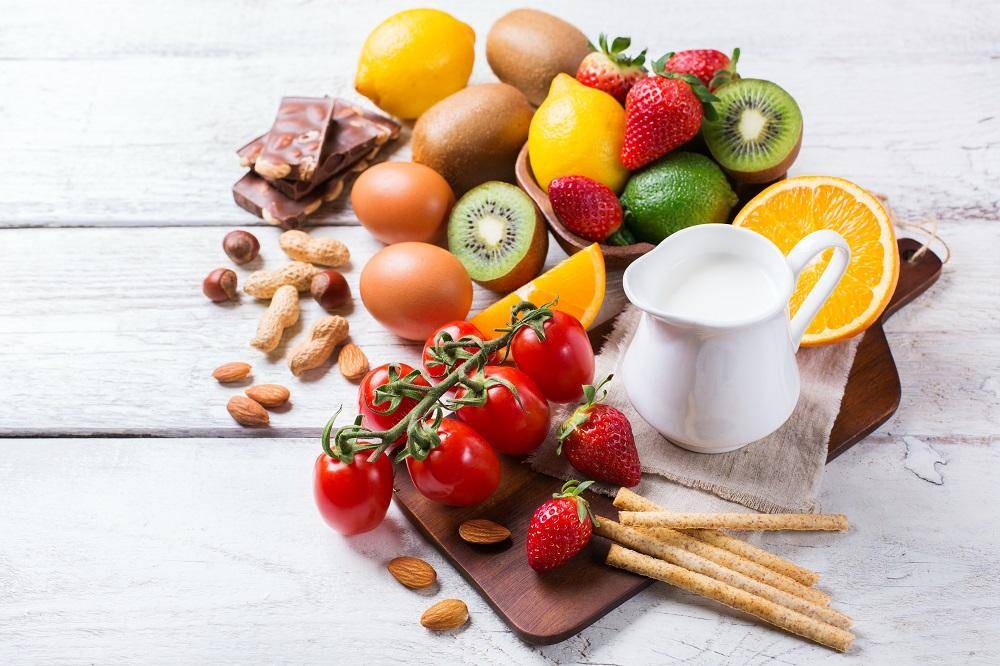
Powerful Foods to Lower Cholesterol Levels
Incorporating specific foods into your daily diet can significantly aid in lowering cholesterol levels while promoting overall health.These powerful options not only provide essential nutrients but also contain compounds that target cholesterol reduction effectively.
Oats are among the top choices for maintaining healthy cholesterol levels. They contain beta-glucan, a type of soluble fiber that helps reduce the absorption of cholesterol into the bloodstream. Starting your day with a hearty bowl of oatmeal topped with fruits can set a positive tone for your heart health.
Nuts, especially almonds and walnuts, are another fantastic addition. These nutrient-dense snacks are rich in polyunsaturated fats, which can improve cholesterol levels when consumed in moderation. A handful of nuts not only keeps hunger at bay but also provides a good source of antioxidants and fiber.
Another food group to consider is legumes, which include beans, lentils, and peas. They are high in soluble fiber and can serve as an excellent meat alternative, making meals heart-amiable and lower in saturated fats. Incorporating legumes into salads,soups,and stews is an easy way to enhance a cholesterol-lowering diet.
Don’t overlook the power of fruits, especially berries and apples. These fruits are packed with pectin, a type of soluble fiber that can decrease LDL (low-density lipoprotein) cholesterol. Including a variety of these colorful fruits in snacks or desserts not only satisfies your sweet tooth but also supports your cholesterol management efforts.
| Food | Benefits |
|---|---|
| Oats | Rich in beta-glucan, lowers LDL cholesterol |
| Nuts | Contains polyunsaturated fats, improves heart health |
| Legumes | High in fiber, reduces cholesterol absorption |
| Berries | Rich in pectin, promotes lower LDL levels |
| Apples | Helps decrease cholesterol due to soluble fiber |
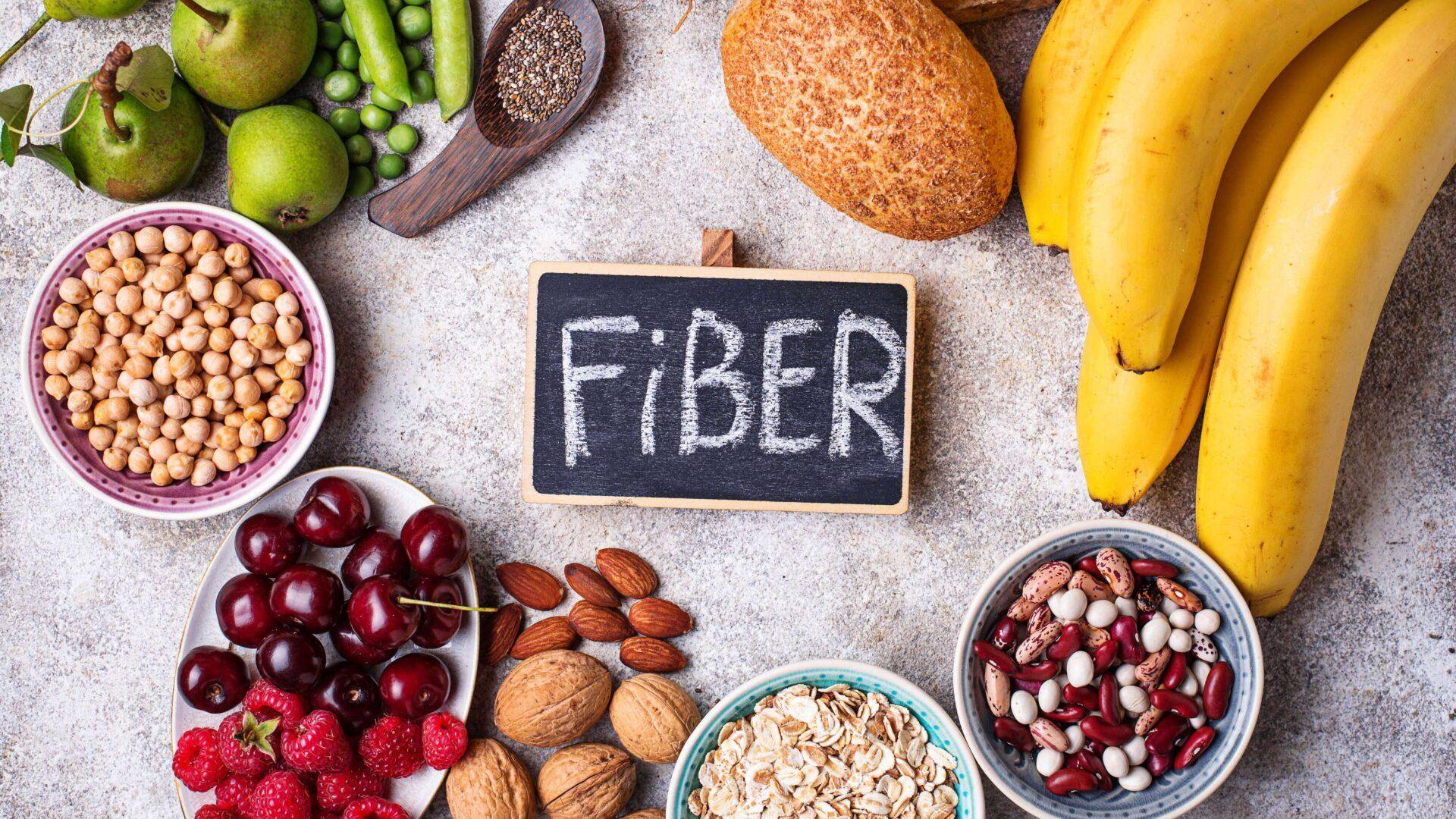
The Role of Fiber in Cholesterol Management
Fiber is an essential component of a healthy diet and plays a pivotal role in managing cholesterol levels. By incorporating more fiber into your meals, specifically soluble fiber, you can significantly lower your LDL (low-density lipoprotein) cholesterol — often referred to as “bad” cholesterol. Soluble fiber helps to bind cholesterol in the digestive system, allowing it to be excreted rather than absorbed into the bloodstream.
Foods rich in soluble fiber include:
- Oats: A hearty breakfast option that packs a fiber punch.
- Beans: Versatile and nutritious, beans are perfect for soups, salads, and side dishes.
- Barley: this grain adds a chewy texture to dishes and helps manage cholesterol levels.
- Fruits: Apples,pears,and citrus fruits are appetizing sources of soluble fiber.
- Vegetables: Carrots and Brussels sprouts contribute fiber and flavor.
Incorporating these fiber sources into your diet can yield transformative health benefits.Not only does soluble fiber work to lower LDL cholesterol, but it also helps stabilize blood sugar levels, promoting overall cardiovascular health. this can result in enhanced heart function, reduced weight, and improved metabolic health. By making small adjustments to your diet, the benefits of fiber can proliferate throughout your body.
Adding fiber isn’t just about consuming whole foods; it’s also about the methods by which you prepare and enjoy them. For instance, consider using whole grains instead of refined grains. A simple swap from white rice to brown rice can elevate the fiber content of your meal significantly. Here’s a brief comparison:
| Food Item | Fiber Content (per 100g) |
|---|---|
| White Rice | 0.4g |
| Brown Rice | 1.8g |
To maximize the cholesterol-lowering effects of fiber,it’s crucial to consume it consistently as part of a balanced diet. Aim for at least 25-30 grams of fiber per day,integrating various sources into your meals to ensure you’re getting a wide range of nutrients. Remember, the key is not just quantity but quality; focusing on whole, unprocessed foods will yield the best results for your cholesterol management journey.
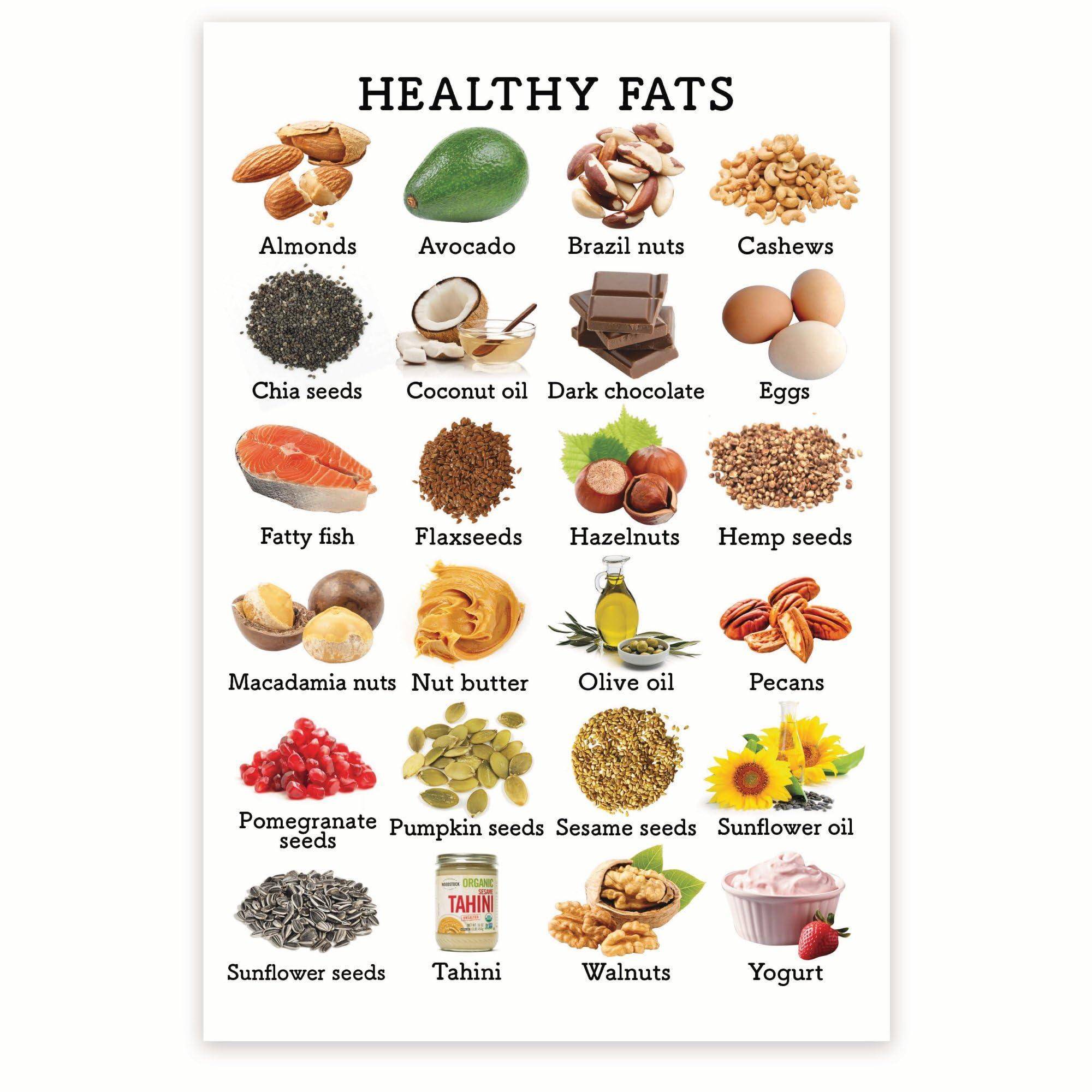
Incorporating Healthy Fats into Your Meals
Integrating healthy fats into your meals is an essential step towards reducing cholesterol levels naturally. Unlike trans fats and saturated fats, healthy fats can definitely help improve your lipid profile and provide numerous health benefits. To start, consider incorporating sources of unsaturated fats, which include foods rich in omega-3 and omega-6 fatty acids.
Some fantastic sources of healthy fats for your diet are:
- Avocados: Creamy and versatile, they can elevate your salads or spread beautifully on whole-grain toast.
- Nuts and seeds: Almonds, walnuts, chia seeds, and flaxseeds not only provide a satisfying crunch but also boost heart health.
- Fatty fish: Salmon, mackerel, and sardines are exemplary options that deliver high levels of omega-3 fatty acids.
- Olive oil: A staple in Mediterranean cuisine, it’s ideal for drizzling over dishes or using in salad dressings.
When swapping out unhealthy fats for healthier options, remember to keep portion sizes in mind. While healthy fats have beneficial properties, they are calorie-dense. Using a simple guideline, aim for about 20-35% of your total daily calories to come from healthy fats. Here’s a quick look:
| Food Item | Serving Size | Healthy Fat Content (g) |
|---|---|---|
| Avocado | 1 medium | 21 |
| Chia seeds | 2 tbsp | 9 |
| Salmon | 3 oz | 13 |
| Olive oil | 1 tbsp | 14 |
Another key aspect of incorporating healthy fats is to replace less nutritious options with these beneficial foods. For example, when cooking, you can substitute butter with olive oil or avocado oil. when it comes to snacking, exchange chips for a handful of nuts or a slice of whole grain bread topped with nut butter. Every small change accumulates over time, contributing significantly to heart health.
Lastly,get creative with your meal planning. Add healthy fats to smoothies,oatmeal,or yogurt. You can also create dressings or dips using ingredients like tahini or nut butter. By thinking outside the box, you’ll find numerous ways to incorporate these fats into your diet while enjoying delicious meals.

The Importance of Regular Physical Activity
Engaging in physical activity regularly holds significant value for maintaining overall health and well-being. Among its many benefits, consistent exercise plays a crucial role in managing cholesterol levels. When you incorporate physical activity into your routine,your body responds positively,leading to improvements in cardiovascular health. It can elevate levels of high-density lipoprotein (HDL) cholesterol, often referred to as the ”good” cholesterol, while concurrently decreasing low-density lipoprotein (LDL) cholesterol, known as the “bad” cholesterol.
One of the remarkable aspects of exercising is that it doesn’t have to be intense to yield benefits. Simple, enjoyable activities can make a substantial difference. Consider incorporating these types of activities into your lifestyle:
- Walking: A brisk walk for 30 minutes a day can enhance your heart health and regulate cholesterol.
- Biking: Cycling, whether stationary or on the road, boosts cardiovascular fitness and is a low-impact exercise.
- Swimming: This full-body workout is not only gentle on the joints but also an excellent way to build endurance and improve heart health.
- Yoga: Practicing yoga can reduce stress levels,which are important for heart health,potentially leading to lower cholesterol levels.
Moreover, engaging in regular physical activity can also aid in weight management. Excess body weight is a significant factor that contributes to elevated cholesterol levels; therefore, maintaining a healthy weight through exercise can make a considerable impact.Activities that increase heart rate and promote fat loss are particularly beneficial,allowing the body to efficiently utilize lipids for energy rather than storing them. As your fitness levels improve, you’ll find that your body is more adept at handling fats, leading to a decrease in LDL cholesterol.
It’s essential to set realistic and achievable goals tailored to your fitness level. Establishing a routine can help solidify these goals,making them more tangible and attainable. Below is a simple framework to help guide your fitness journey:
| Activity | Frequency | duration |
|---|---|---|
| Walking | 5 times a week | 30 minutes |
| strength training | 2-3 times a week | 20-30 minutes |
| Cardio (Cycling/Swimming) | 3-4 times a week | 30-45 minutes |
| Yoga | 2 times a week | 30 minutes |
the combined effects of regular physical activity extend far beyond cholesterol levels. Improved mood, enhanced energy, and better quality of sleep are just a few additional rewards of maintaining an active lifestyle. By prioritizing consistent exercise,you are actively choosing a healthier path,not just for your heart,but for your entire well-being. Remember, every small step counts on your journey to reducing cholesterol naturally.

stress Management Techniques for Heart Health
Managing stress effectively is crucial for maintaining heart health, especially when it comes to natural cholesterol reduction. High levels of stress can lead to unhealthy behaviors and physiological changes that negatively impact cholesterol levels and overall cardiovascular health. Here are some practical techniques to help alleviate stress and promote heart well-being.
Meditation and Mindfulness play an essential role in stress reduction. Taking a few minutes each day to practice mindfulness or meditation can help calm your mind and lower cortisol levels. Consider incorporating techniques such as:
- Deep breathing exercises
- Guided visualization sessions
- sensory meditation, focusing on tastes, sounds, and textures
Regular physical activity is another effective strategy. Exercise not only enhances physical fitness but also serves as a stress-reliever. Engaging in activities such as:
- Walking or jogging in nature
- yoga or Pilates
- Dancing or joining a sports team
can elevate endorphin levels,providing a natural mood boost while benefiting heart health.
Maintaining strong social connections is vital. Surrounding yourself with supportive friends and family can ease stress and provide a sense of belonging. Regularly engaging in social activities fosters communication and emotional support. Try activities like:
- hosting dinner parties
- Joining community groups or clubs
- Volunteering for local organizations
proper sleep hygiene cannot be overlooked. Quality sleep is essential for recovery and stress management. Consider creating a peaceful nighttime routine by:
- Avoiding screens an hour before bed
- Establishing a consistent sleep schedule
- Creating a calming sleep surroundings with minimal light and sound
By integrating these stress management techniques into your daily routine, you can combat the negative effects of stress on your heart health and contribute to lower cholesterol levels naturally. A balanced approach to emotional well-being and physical health is key in nurturing a healthier heart.
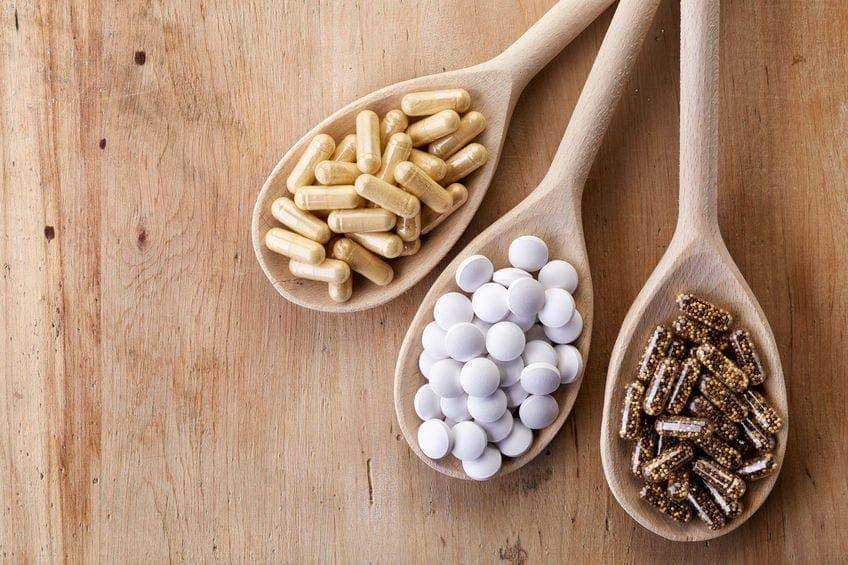
Natural Supplements to Consider for Cholesterol Control
Managing cholesterol levels through natural supplements is an appealing option for many seeking alternative approaches. Several compounds have been shown to assist in cholesterol regulation, directly impacting your overall heart health. By incorporating these into your diet, you may concurrently enjoy their additional health benefits.
Omega-3 Fatty Acids are essential fats that are primarily found in fish oil, flaxseeds, and walnuts.These fatty acids can significantly lower triglyceride levels, an critically important factor in cholesterol management. Incorporating fatty fish like salmon and mackerel into your meals or taking a fish oil supplement can help enhance your cardiovascular health.
Plant Sterols and Stanols, found in small amounts in many plants, can block the absorption of cholesterol in the intestines. Foods fortified with these compounds, like certain margarines and yogurt drinks, can provide an effective means to lower LDL cholesterol levels. Aim for a daily intake of 2 grams of plant sterols for optimal heart health.
Fiber plays a critical role too, particularly soluble fiber. Foods rich in oats, barley, beans, and fruits are excellent choices. This fiber helps in lowering cholesterol by binding with cholesterol particles in the digestive system, allowing them to be expelled from the body.Consider consuming at least 5 to 10 grams of soluble fiber per day to reap its benefits.
Red Yeast Rice is another natural option that has gained popularity for its ability to lower cholesterol. It contains monacolin K, which has similar effects to statin medications. Though, it’s crucial to consult a healthcare provider before starting any supplements to avoid potential side effects. For those looking for natural solutions, following dosage recommendations and monitoring levels is paramount.

Building a Sustainable Lifestyle for Long-Term Benefits
Adopting a sustainable lifestyle is not only beneficial for the planet but also for your health, particularly when it comes to cholesterol management. Making small, consistent changes in dietary choices can lead to significant improvements in your cholesterol levels. By focusing on whole foods, you can create a nourishing plate that promotes heart health. Consider incorporating a variety of the following foods:
- Fruits and Vegetables: Packed with fiber, antioxidants, and essential vitamins.
- Whole Grains: Choose oats, quinoa, and brown rice to lower bad cholesterol.
- Nuts and Seeds: Rich in healthy fats, they can enhance heart function and decrease levels of LDL.
- Legumes: Beans, lentils, and chickpeas provide fiber and protein while being low in saturated fats.
- Healthy Fats: Replace saturated fats with unsaturated sources like olive oil or avocados.
Regular physical activity also plays a crucial role in maintaining healthy cholesterol levels. striving for at least 150 minutes of moderate exercise each week not only boosts overall cardiovascular health but also enhances the body’s ability to metabolize fats effectively. Consider these enjoyable activities to integrate into your routine:
- Walking or cycling: Easy to start and can be adapted to your fitness level.
- Swimming: A full-body workout that’s gentle on the joints.
- Yoga: Helps reduce stress levels, which can indirectly support heart health.
- Group Classes: Join local sessions to stay motivated and social while exercising.
Mindful eating is another basic aspect to consider. This involves not only the selection of healthy foods but also how you consume them. Focusing on the experience of eating, appreciating each bite, and being aware of hunger cues can lead to healthier portion control. To implement mindful eating:
- Eliminate Distractions: Put down your phone and turn off the TV during meals.
- Chew Slowly: Allow your body time to signal when it’s full.
- Engage in Meal Preparation: Cooking at home helps you control ingredients and portion sizes.
| Food Type | Benefits |
|---|---|
| Oats | Rich in soluble fiber, helps lower LDL cholesterol. |
| Fatty Fish | High in omega-3 fatty acids, supports heart health. |
| Avocado | Contains monounsaturated fats that can help increase HDL cholesterol. |
| Dark Chocolate | In moderation, can improve heart health due to flavonoids. |

Monitoring Your Progress and Staying motivated
Tracking your journey towards lower cholesterol levels is crucial for success. Utilize a journal or digital app to log your daily meals, exercise routines, and any health changes you notice. This will not only provide insight into what works for you, but also serve as a constant reminder of your goals. Seeing your achievements in black and white can be a powerful motivator. Consider including the following elements in your tracking:
- daily food intake: Record everything you eat, focusing on meals rich in fiber and healthy fats.
- Exercise frequency: note how often you are active, whether it’s a brisk walk or a gym session.
- Health metrics: Regularly check your cholesterol levels, weight, and any other relevant health indicators.
Setting achievable goals is another key component in maintaining motivation. While it’s great to aim for substantial changes, breaking your objectives into smaller, measurable steps can definitely help prevent feelings of overwhelm. Such as, instead of aiming to lower your cholesterol by a specific percentage within a month, focus on:
- Incorporating two servings of fruits and vegetables into each meal.
- Engaging in 30 minutes of moderate exercise three times a week.
- Replacing red meat with lean protein sources two times a week.
Reinforcing your efforts through positive reinforcement can make a significant difference as well. Celebrate the milestones—both big and small. Reward yourself for sticking to your meal plan for a week or achieving a consistent exercise routine for a month. These rewards don’t have to be extravagant; simple pleasures like enjoying a movie night or treating yourself to a new book can keep the momentum going.
Finding a support system can also provide encouragement along the way. Engage with friends,family,or online communities who share similar health goals. Discussing challenges and successes can foster a sense of camaraderie.You might even consider starting a group with others who are also looking to reduce cholesterol naturally. This collaborative environment can definitely help you remain accountable and inspired.
track your emotional well-being as you adapt to these lifestyle changes. Recognizing how you feel physically and mentally can help you stay focused on your journey. Are you feeling more energetic? Are your cravings for unhealthy foods diminishing? Keeping a separate section in your tracking journal for reflections on your mood and overall health can provide insights that are just as important as those related to cholesterol levels.
Q&A
Q&A: How to Reduce Cholesterol Naturally
Q1: What is cholesterol, and why is it important?
A1: Cholesterol is a waxy substance found in your body that is crucial for producing cell membranes, hormones, and vitamin D. While your body needs cholesterol to function properly, having too much of it—especially low-density lipoprotein (LDL) cholesterol—can lead to health issues like heart disease and stroke. Striking a balance is essential for maintaining a healthy lifestyle.
Q2: What are some natural ways to lower cholesterol levels?
A2: There are several natural strategies you can employ to help lower your cholesterol. Here are a few effective methods:
- Embrace a heart-healthy diet: Focus on foods rich in soluble fiber, such as oats, beans, lentils, fruits, and vegetables. Incorporate healthy fats, like those found in avocados, nuts, and olive oil, while reducing saturated and trans fats.
- Get moving: Regular physical activity can definitely help raise high-density lipoprotein (HDL) cholesterol, the “good” type, while lowering LDL cholesterol.Aim for at least 150 minutes of moderate exercise each week.
- Maintain a healthy weight: Shedding excess pounds can help reduce LDL levels and improve overall heart health. even a modest weight loss can make a significant difference.
- Quit smoking and limit alcohol: If you smoke, quitting can improve your HDL cholesterol. Additionally, moderating alcohol intake may contribute to better cholesterol levels.
Q3: Are there specific foods that can definitely help lower cholesterol?
A3: Absolutely! Some standout foods include:
- oats: Starting your day with a bowl of oatmeal can give your cholesterol levels a boost thanks to beta-glucan, a type of soluble fiber.
- Fatty fish: Salmon, mackerel, and sardines contain omega-3 fatty acids, which are excellent for heart health.
- Nuts: Walnuts and almonds, in particular, can improve cholesterol profiles and offer essential nutrients.
- Legumes: Beans and lentils are low in fat and high in fiber, making them fantastic additions to your diet.
- Fruits and vegetables: Berries, apples, and citrus fruits are not only delicious but also packed with fiber and antioxidants that can lower cholesterol.
Q4: How does stress impact cholesterol levels?
A4: Chronic stress can contribute to unhealthy lifestyle choices, such as poor eating habits and a lack of exercise, which can, in turn, elevate cholesterol levels. Managing stress through practices like meditation, yoga, or even leisurely walks in nature can definitely help maintain both your mental well-being and your cholesterol levels.
Q5: Can supplements help with cholesterol reduction?
A5: Some supplements may aid in lowering cholesterol levels. Omega-3 fatty acid supplements, plant sterols, and fiber supplements like psyllium husk are known to have positive effects. Though, it is indeed essential to consult with a healthcare professional before starting any new supplement regimen, as individual needs may vary.Q6: How long does it take to see results from natural cholesterol-lowering methods?
A6: The timeline for seeing changes in cholesterol levels can vary. Typically, adopting a healthier lifestyle can lead to measurable improvements within a few weeks to a few months. Regular monitoring and consultations with your healthcare provider can help you track your progress and make necessary adjustments to your approach.
Q7: What role does genetics play in cholesterol levels?
A7: Genetics can significantly influence cholesterol levels. Conditions like familial hypercholesterolemia can cause high cholesterol nonetheless of lifestyle choices. If you have a family history of high cholesterol or heart disease, it’s important to work with your healthcare provider for tailored strategies, which may include both lifestyle changes and medication if necessary.
Q8: Is it possible to entirely eliminate cholesterol from my diet?
A8: While it’s nearly impossible to eliminate cholesterol entirely as your body produces it naturally, you can aim to maintain healthy levels by making mindful dietary choices. Focus on balanced eating habits that promote heart health rather than eliminating cholesterol outright.
Final Thoughts:
Incorporating these natural methods can definitely help you maintain healthy cholesterol levels. Remember, small changes can lead to significant results, and it’s always advisable to consult with a healthcare provider before making any major adjustments to your diet or lifestyle.Stay informed, and embark on your journey to better heart health!
To Conclude
embracing a heart-healthy lifestyle is not just a journey towards reducing cholesterol levels; it is a commitment to overall well-being. By making mindful choices in our diet, incorporating regular physical activity, and nurturing our mental health, we can harness the power of nature to support our cardiovascular health. Remember, every small change counts. Whether it’s swapping out saturated fats for healthier alternatives, loading up on fiber-rich fruits and vegetables, or finding joy in movement, these steps can lead to profound benefits for both your heart and your body. As you embark on this path, be patient with yourself and celebrate each milestone. With dedication and persistence, you have the power to transform your health naturally, paving the way for a longer, healthier life. Your heart will thank you for it.
